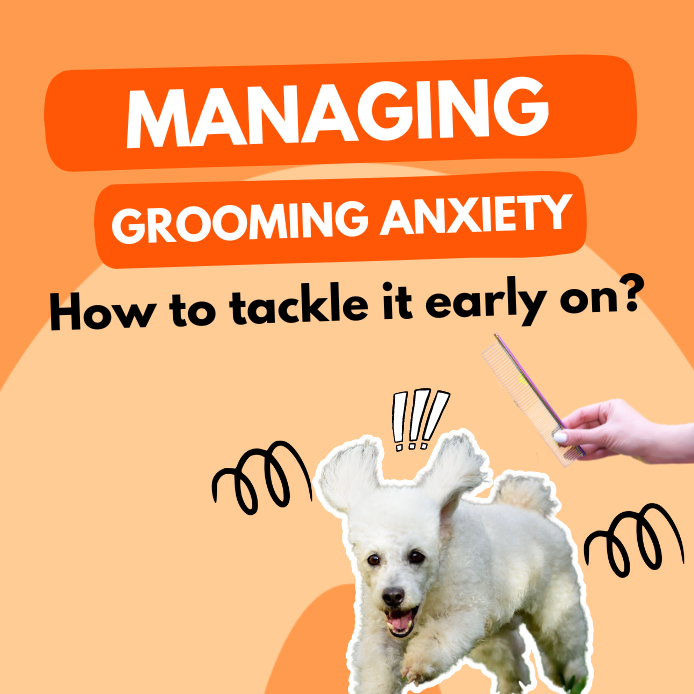Managing Grooming Anxiety: How To Tackle It Early On

Grooming your dog is important. It’s not just essential for their hygiene but also impacts their overall health. According to PetSmart's 2019 survey, 67% of dog parents were aware that grooming is an integral process of maintaining their dog's health. But, out of those surveyed, only 37% regularly take their dog to a professional groomer.
Grooming extends beyond aesthetics. It prevents Skin Issues, Infections, and enables a dog to have a healthy coat. Though grooming is important but can get uncomfortable for dogs. They may start to;
- Whine or attempt to escape
- Growl or show unusual aggression
- Excessively Tremble
This is what is commonly referred to as Grooming Anxiety. Grooming Anxiety is common but is critical to deal with early on.
Wondering how dogs develop grooming anxiety?
Lack of grooming experience, traumatic past experiences, or sensitivity to a change in environment leads to dogs becoming anxious about the process.
To overcome this and make grooming an experience your dog looks forward to, here are some helpful ways you can try with your furry friend
Gradual Desensitization:
This is a two-step process wherein initially, you make sure that your dog gets his time to build a positive association with the tools that are to be used later. Let him sniff around and get comfortable with the scent of unfamiliar objects. In addition, incorporate small cuddling sessions and make your dog comfortable getting his ears, body, and paws touched. Gradually, increase the duration over time.
Selecting the Right Tools:
While choosing the right tools, consider your dog’s size, breed, and coat type. If you have a Siberian Husky or a Golden Retriever who sheds fur throughout the year, grooming gloves and slicker brushes might become your best friends. Similarly, if you have curly-coated breeds such as a Poodle, curved scissors might be useful. Remember, tools must be gentle to your dog’s sensitive areas to avoid any discomfort.
Positive Reinforcement:
Distract your dog during grooming sessions by reinforcing positivity. This can be done by shifting their focus on the praises and treats that come their way. If you want to go the extra mile, create a positive environment for them by including physical elements such as their blanket or their favorite toy. You can also play soothing music or incorporate scented candles to further encourage calm behavior.
Have Breaks in Between:
Grooming can often be a tiring experience for you as well as your dog. Divide the process into smaller segments to avoid feeling overwhelmed. In these breaks, you can cuddle your dog or play fetch with them to ease them out. This is yet another way of distracting your dog and changing his outlook on the process of grooming.
Professional Guidance:
If you think your dog’s anxiety is extreme, consult trained professionals who have expertise in anxiety management when it comes to dogs. They can help you with custom strategies and tips by studying your dog and his specific needs. Sploot has a number of professional dog groomers, simply book a session & we would love to help you.
Dealing with grooming anxiety can be a long process. Try breaking this process into small segments and start with decoding what is actually bothering your dog. Further, process how to overcome those obstacles. Try desensitizing them gradually, choosing the right grooming tools for them, reinforcing positivity, having breaks in between, and consulting a professional if you get stuck anywhere. If this process gets slow, remember to be patient and empathetic and give your dog the time he requires to look forward to grooming sessions.
